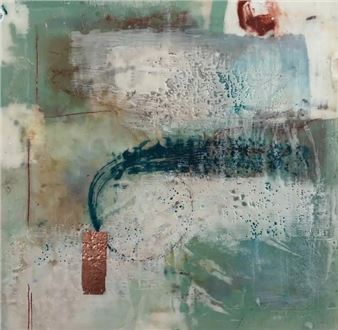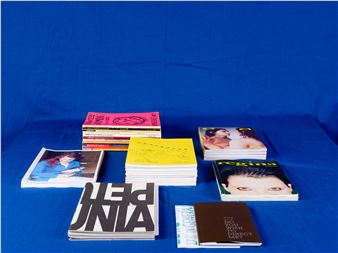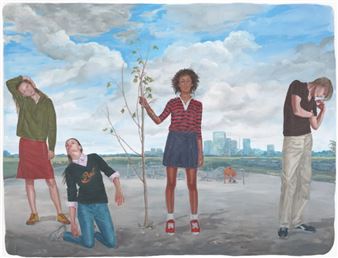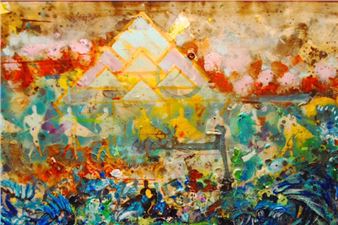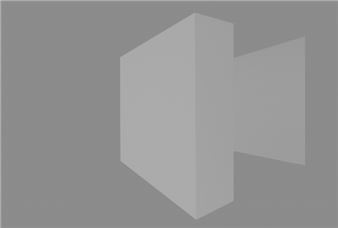Tue Greenfort: 400 million years
Horizons, such as seascapes, make men feel fragmented. The scale of the sea, sky and sun shrinks our own presence on earth to a mere second in time. And so we measure: Time in relation to earth (its rock strata) is “geological time”. A tiny fraction of a split geological nano second ago, we named the present “anthropocene”: the period of time when men began modifying the earth, sea and sky, and anthropogenic residue has come to stratify the world. More precisely: a world which created the horseshoe crab about 400 million years ago. And here we are, right in the middle of Tue Greenfort’s 6th solo exhibition at KÖNIG GALLERY, Greenfort’s first show at the St Agnes chapel. Under the evocative title 400 Million Years, Greenfort presents three new groups of works that evolve around processes of the natural world, discourses of ecology and notions of the environment, while the horseshoe crab figures as a leitmotif to the exhibition’s perspective on human and non-human agency.
Tue Greenfort’s exhibition 400 Million Years is a snapshot of specimen at a point in time. It pursues a sampling sited between faux classification and amateur collecting. It redistributes visibility between the invading and the annihilated. Yet visibility alone does not make art. Imagination sets in. And here we are, in the middle of alliances into uncharted realms.
Tue Greenfort’s interdisciplinary practice deals with issues such as the public and private realm, nature and culture. Interweaving these subjects with the language of art he formulates a multi-facetted critique of today's dominant economical and scientific production. Intrigued by the dynamics in the natural world, Greenfort’s work often evolves around ecology and its history, including the environment, social relations, and human subjectivity.

Recommended for you
Horizons, such as seascapes, make men feel fragmented. The scale of the sea, sky and sun shrinks our own presence on earth to a mere second in time. And so we measure: Time in relation to earth (its rock strata) is “geological time”. A tiny fraction of a split geological nano second ago, we named the present “anthropocene”: the period of time when men began modifying the earth, sea and sky, and anthropogenic residue has come to stratify the world. More precisely: a world which created the horseshoe crab about 400 million years ago. And here we are, right in the middle of Tue Greenfort’s 6th solo exhibition at KÖNIG GALLERY, Greenfort’s first show at the St Agnes chapel. Under the evocative title 400 Million Years, Greenfort presents three new groups of works that evolve around processes of the natural world, discourses of ecology and notions of the environment, while the horseshoe crab figures as a leitmotif to the exhibition’s perspective on human and non-human agency.
Tue Greenfort’s exhibition 400 Million Years is a snapshot of specimen at a point in time. It pursues a sampling sited between faux classification and amateur collecting. It redistributes visibility between the invading and the annihilated. Yet visibility alone does not make art. Imagination sets in. And here we are, in the middle of alliances into uncharted realms.
Tue Greenfort’s interdisciplinary practice deals with issues such as the public and private realm, nature and culture. Interweaving these subjects with the language of art he formulates a multi-facetted critique of today's dominant economical and scientific production. Intrigued by the dynamics in the natural world, Greenfort’s work often evolves around ecology and its history, including the environment, social relations, and human subjectivity.
Artists on show
Contact details


 ARTISTS
ARTISTS







